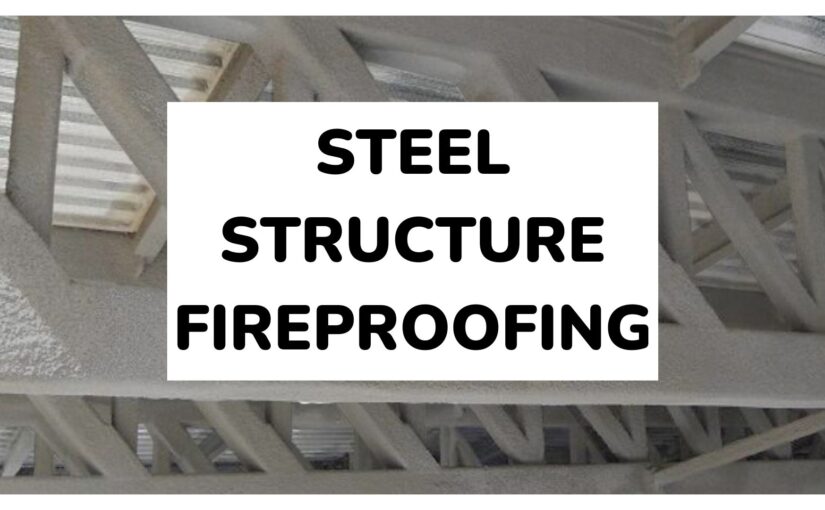Tall steel buildings serve as testaments to their inventiveness and strength in contemporary architecture. They are a popular option for a variety of buildings, from massive industrial complexes to skyscrapers, because to their durability and versatility. But even though steel buildings are strong, fire can still strike at any time. Steel can be weakened by a fire’s high heat, endangering the structural stability of the entire building. This is the point at which steel structure fireproofing becomes essential.
What is Fireproofing of Steel Structures?
Enhancing steel structures’ fire resistance is a proactive approach known as fireproofing. It entails coating steel components with specific compounds to protect them from high fire temperatures. By slowing down the steel’s heating process and postponing its critical temperature, these compounds provide a barrier that keeps structures from collapsing.
Why is Fireproofing Necessary for Steel Structures?
It is imperative that steel buildings be made fireproof. Steel is known for its strength, but when it gets hot, it quickly loses its ability to support weight. During a fire, untreated steel can reach critical temperatures rather quickly, which can cause deformation and collapse. By prolonging the time it takes for the steel to heat up, fireproofing reduces this risk and gives valuable minutes for evacuation and firefighting operations.
When is Fireproofing of Steel Structures Required?
Under certain conditions, building laws and regulations require steel constructions to be fireproof. Every structure meant for human habitation, including public buildings, office buildings, and residential complexes, usually needs its structural steel components fireproofed. Furthermore, fireproofing is frequently required for industrial buildings that house combustible products or vital infrastructure in order to avoid disastrous breakdowns during fires.
Common Methods of Fireproofing Steel Structures
Several methods are employed to fireproof steel structures, each offering unique advantages in terms of cost, application, and effectiveness. Some prevalent methods include:
• Intumescent Coatings: These coatings expand when exposed to heat, forming a protective char layer that insulates the steel from fire.
• Sprayed Fire-Resistive Materials (SFRM): Applied using specialized equipment, SFRM provides a thick layer of insulation, offering robust fire protection.
• Concrete Encasement: Surrounding steel members with concrete provides excellent fire resistance, albeit at a higher cost and weight.
• Board and Blanket Systems: Prefabricated boards or blankets made of mineral fibers or ceramics are installed around steel components to insulate them from fire.
How Does Fireproofing Protect Steel Structures During a Fire?
The process of fireproofing involves reducing the rate at which heat enters the steel structure. The materials applied are either heat-absorbing, cool the surface by releasing water vapour, or provide a protective char coating that insulates the steel when exposed to fire. By prolonging the time it takes for the steel to reach critical temperatures, this insulation helps to prevent structural failure and promote safer evacuation and firefighting procedures.
Building design and construction must include fireproofing steel structures. Builders and property owners can greatly increase the fire resistance of steel structures, thereby saving lives and minimising property loss, by realising the significance of fireproofing and following the requirements for its application. Investing in fireproofing is a proactive measure to protect against the destructive effects of fires on structures and communities, in addition to being required by law.

